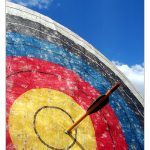Celtic paganism, also known as Celtic polytheism, is the religious beliefs and practices of the people of the Iron Age known as the Celts. True Celtic polytheism or Celtic paganism is virtually impossible to follow because so much of the information about their practices and rituals simply doesn’t exist – the Celts wrote down nothing about their religions so when they were invaded by the Romans, all information about their religion was recorded by their invaders.

What is Celtic Paganism?
In the modern era, Celtic paganism is better defined by the term Celtic Reconstructionist Paganism. It differs from the neo-paganistic and eclectic beliefs of many of the groups that practice a wide variety of styles of druidism and is focused on reviving and even reconstructing the religion of Celtic polytheism as it existed before the invasion of the Romans while keeping it in our modern cultural context.
Rebuilding Celtic paganism is a long and difficult endeavor that stretches across generations of people in a number of different places in the world – the Celts themselves migrated from Eastern Europe to France and finally across the Channel and into the British Isles where they are now most recognized as coming from. Because there is no written record of the rituals and practices, Reconstructionists have to look into their family history and figure out where their family traditions come from. Many Reconstructionists have backgrounds in archaeology and history and use this knowledge to pour over what literature there is from the time to figure out where their personal family folklore and rituals comes from.
Celtic Practices
While the true rituals and practices of Celtic paganism are sought for, it is not unheard of for a Reconstructionist to choose to set aside a particular ritual. Some of the behaviors and rituals of the ancient Celtic pagans are simply incompatible with our modern way of life and while Reconstructionists certainly seek to fully document and transcribe these activities, they do choose not to include them in their own practices and way of life.
Celtic Lifestyle
Celtic paganism is more than a religion, for many it is a way of life containing many tales, songs and activities from their culture. They have practiced dances, sung songs, and celebrated festivals for generations, and a great many of these are evolved from early Celtic pagan traditions. For a number of the Celtic people’s, particularly those of the British Isles, these are as much a part of their personal identity as they are a part of their family history and indeed their very culture. Reconstructionists seek to go further than this, however, to uncover the very roots of their cultural heritage before it was enveloped and adapted by early Christianity. The barest basics of Celtic paganism is maintained in the idea that the ancient people swore their oaths by land, sky and sea; therefore many of the Celtic pagans and Reconstructionists can at least begin to uncover their past by maintaining their altars and shrines to their patrons in outdoor locations, swearing their loyalty and fealty by the three realms.













